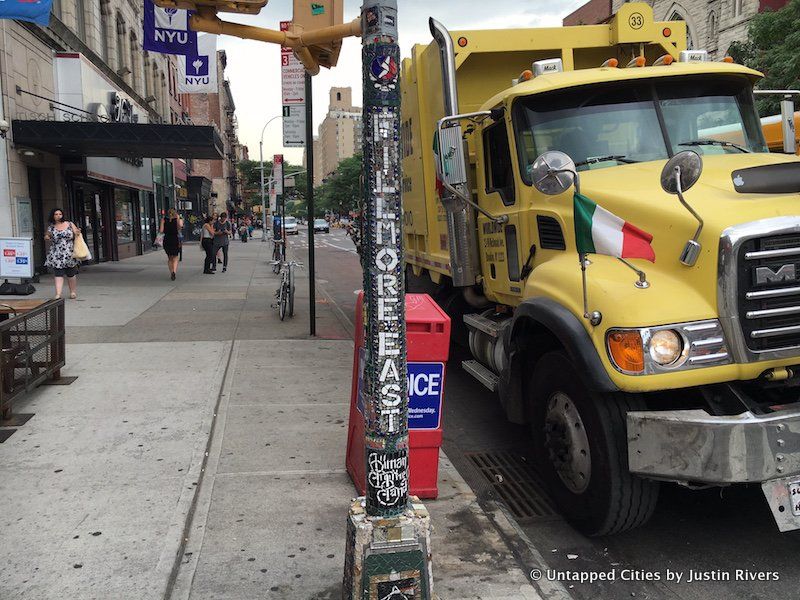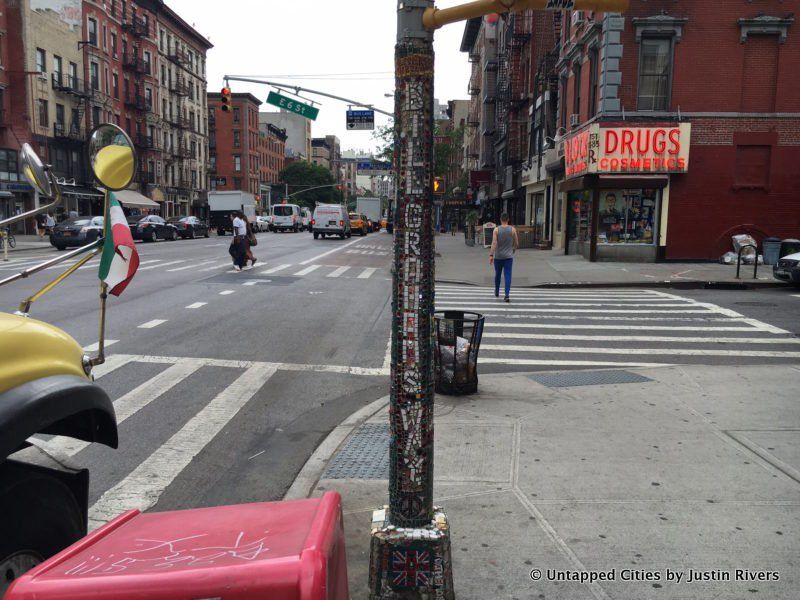NYC’s Forgotten ‘War on Christmas Trees’
Discover how an obscure holiday crackdown affects festive street vendors today!


On June 27, 1971 the Fillmore East closed its doors after three years of ground breaking concerts which helped to define rock and roll and East Village counter culture.
Located at 105 Second Avenue, the legendary venue was opened on March 8, 1968 by concert promoter Bill Graham as a counterpart to his successful Fillmore West auditorium in San Francisco. Graham was a German Jewish World War II survivor who was saved by the Red Cross after seeing his mother gassed to death by the Nazis. Later he came to the United States and was taken in by a family from the Bronx. After being drafted into the Korean War (even as a non-United States citizen) he later gained notoriety by promoting the likes of the Jefferson Airplane and the Grateful Dead helping to bring rock and roll out to larger audiences.
It’s hard to imagine the acts that filled the Fillmore’s 3600 seat theater in its three short years, but the short list includes Jimi Hendrix, Led Zeppelin, Janis Joplin, Joni Mitchell, the Grateful Dead, the Doors, Eric Clapton, the Byrds, Joe Cocker and Neil Young. The Allman Brothers Band played so many times they were called the Fillmore house band and recorded a number of live albums there.
Founding Allman Brother’s Band member Dickey Betts recently told Rolling Stone Magazine, “The Fillmore East was everybody’s favorite gig to play. It was the Carnegie Hall of rock ‘n’ roll. Bill Graham made a very great presentation of rock ‘n’ roll, with the light shows and the curtains and the presentation of the bands and the set changes.”
It wasn’t lack of revenue that closed the Fillmore East, but Graham’s dislike of larger concert venues (like the new Madison Square Garden) which he felt were taking rock and roll down a road he didn’t wanted to travel. In an open letter to The Village Voice in April of 1971 he said wrote:
Dear Friends:
Ever since the creation of the Fillmores, it was my sole intention to do nothing more, or less, than present the finest contemporary artists in this country, on the best stages and in the most pleasant halls.
The scene has changed and, in the long run, we are all to one degree or another at fault. All that I know is that what exists now is not what we started with, and what I see around me now does not seem to be a logical, creative extension of that beginning. Therefore, I am taking this opportunity to announce the closing of the Fillmores, and my eventual withdrawal from producing concerts.
The process will commence with the formal closing of Fillmore East on Sunday, June 27, 1971.
You can read his entire letter here.
Dickey Betts went on to say that “the Fillmore East wasn’t big enough to pay any of the bands what they made other places. I think the general feeling among anyone who played there was even though we could be playing somewhere else for three times the money, we’d rather come to the Fillmore East and play because it’s such a great place to play.”
105 Second Avenue was built as the Loew’s Commodore Theatre in 1926 where it played movies to largely Jewish audiences and later became known as the Village Theater. After the Fillmore East closed it turned into a private gay club called The Saint which required a 4.2 million dollar makeover and the inclusion of a planetary dome. In the early 80’s before Acquired Immune Deficiency Syndrome was given a name, some called it Saints disease.
Today there is an Apple Bank occupies the old Fillmore with two distinct memorials honoring the Church of Rock of Roll. The first is “Bill Graham Way” which officially designates the stretch of Second Avenue between 6th and 7th Streets.

Jim Powers’ mosaic reads “Fillmore East”
Second are the tile mosaic plaques which stud the lamppost in front of the former theater. These mixtures of jagged ceramics and broken pottery are the work of Irish-born Vietnam veteran, Jim Powers who has unofficially landmarked other lampposts throughout the East Village.

Jim Powers’ mosaic reads “Bill Graham’s Way” with a British flag on the base
Yesterday Rollingstone.com put together a list of 15 great shows at the Fillmore East with some awesome audio of the concerts included.
Next, see more vintage photographs of the Fillmore East. Read about the Secrets of the East Village.
Subscribe to our newsletter